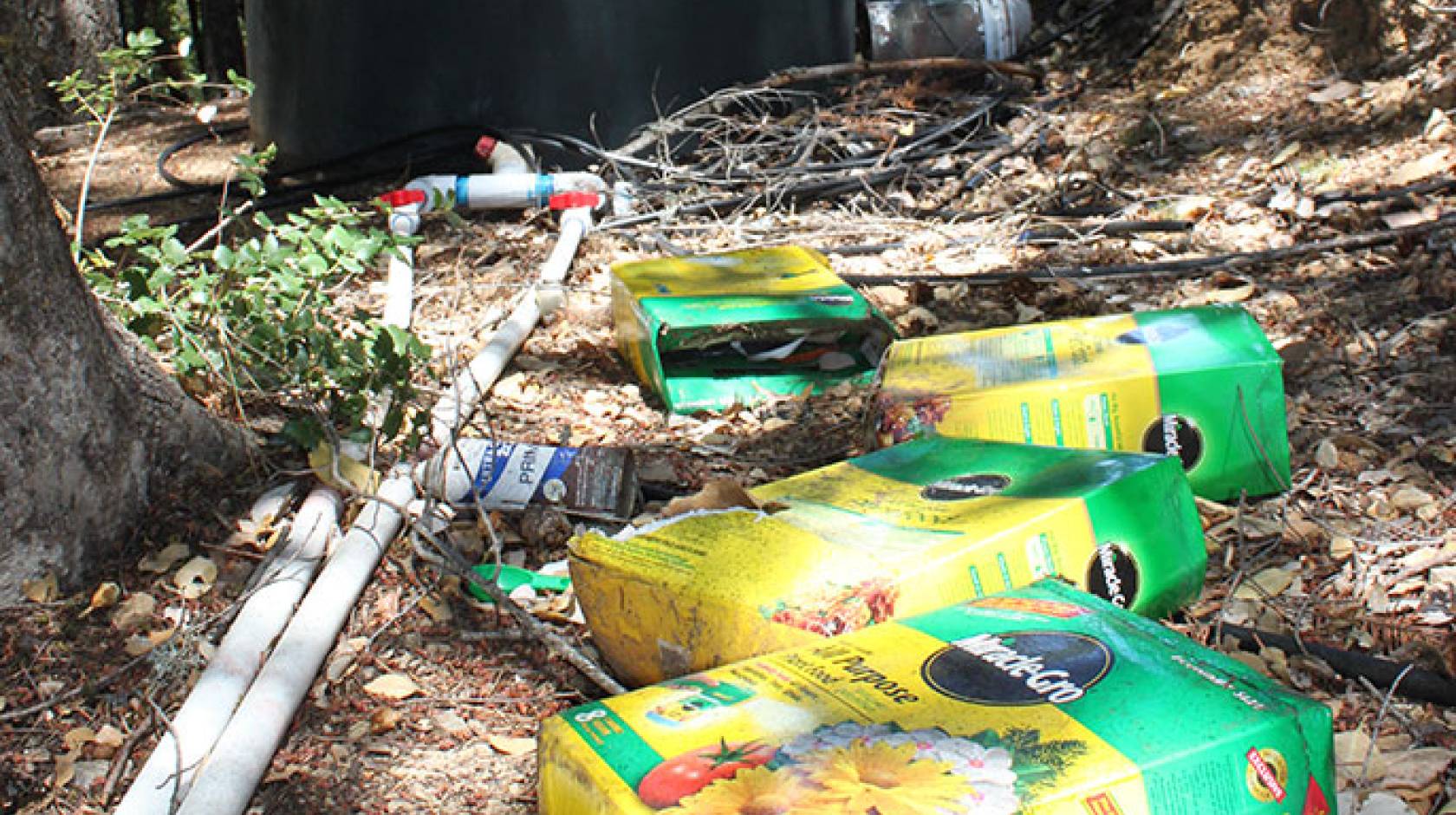Sarah Yang, UC Berkeley

The debate over the legalization of marijuana has focused primarily on questions of law, policy and health. But a new paper co-authored by UC Berkeley researchers shines a spotlight on the environment as an underappreciated victim of the plant’s growing popularity as a cash crop.
Published today (June 24) in the journal Bioscience, the report outlines how illegal marijuana production is hitting California where it hurts, such as in sensitive watersheds already stressed by the state’s ongoing drought. Networks of pipes and hoses siphon water directly from small streams to irrigate the crops, draining what little water there is for wildlife and plants.
Moreover, heavy use of pesticides and poison to keep rats from eating the crops has also polluted the landscape and water. In some cases, the toxins have made their way into the terrestrial food chain, sickening or killing predators that feed on the rats, including Pacific fishers, a candidate for listing under the Endangered Species Act.
The ecological impact has only worsened since the state’s voters legalized the medical use of pot in 1996, creating a “green rush” of marijuana growers seeking to make a profit.

Credit: Jennifer Carah/Nature Conservancy
Led by researchers from the Nature Conservancy, the study included significant UC Berkeley contributions from freshwater fish ecologist Stephanie Carlson, an associate professor of environmental sciences, policy and management; stream ecologist Mary Power, a professor of integrative biology; ecohydrologist Sally Thompson, an assistant professor of environmental engineering; and applied mathematician David Dralle, a Ph.D. student in environmental engineering.
“The environmental harm caused by marijuana cultivation has largely been ignored, but this is a mistake,” said Carlson. “Marijuana is a thirsty crop that often relies on surface water diversions during California’s summer dry season. While many of our native aquatic organisms are adapted to California’s Mediterranean seasonality, the combination of our current drought and summer water diversions for marijuana could be a one-two punch that drives declines in several sensitive populations.”
Much of the work by the UC Berkeley researchers has been conducted in Northern California’s Eel River watershed, which is on the brink of recovery from the damaging effects of half a century of logging and soil erosion.
“The sad fact is that the Eel and coastal rivers like it are on a knife edge,” said Power, who studies food webs in rivers and their tributaries. “All of these wonderful native fishes are on the brink of coming back, and it is very frustrating that their recovery — which has taken 50 years and is actually a fairly encouraging recovery for the fish and for the older Eel habitat — is being derailed by the marijuana ‘green rush’.”
According to government figures, California produces an estimated 60 percent of the marijuana consumed in the United States. In this state, marijuana is primarily grown outdoors in remote forested watersheds. In the state’s north coast region, about 22 liters of water or more per plant per day is used during the growing season, which lasts from June through October.
Study co-author Scott Bauer, a senior environmental scientist at the California Department of Fish and Wildlife, created an estimate of the amount of marijuana grown in this state using a combination of data from Google Earth and on-the-ground busts of illegal marijuana growing sites, and calculated that marijuana can suck up 3 billion liters of water per square kilometer in one season — nearly twice as much, the study authors noted, as wine grapes.
“We’re only starting to get a handle on these numbers,” Thompson pointed out. “This is criminal activity, so it’s dangerous to monitor the impact. But even if the numbers are off, we are still talking about significant quantities of water. It is clear that as a society, we cannot embark upon these conversations of marijuana legalization without considering how the plant will be produced.”
Two other study co-authors — Jeanette Howard, the lead freshwater scientist at the Nature Conservancy, and Sarah Kupferberg, a stream ecologist and consultant to the U.S. Forest Service — got their Ph.D. degrees at UC Berkeley.

